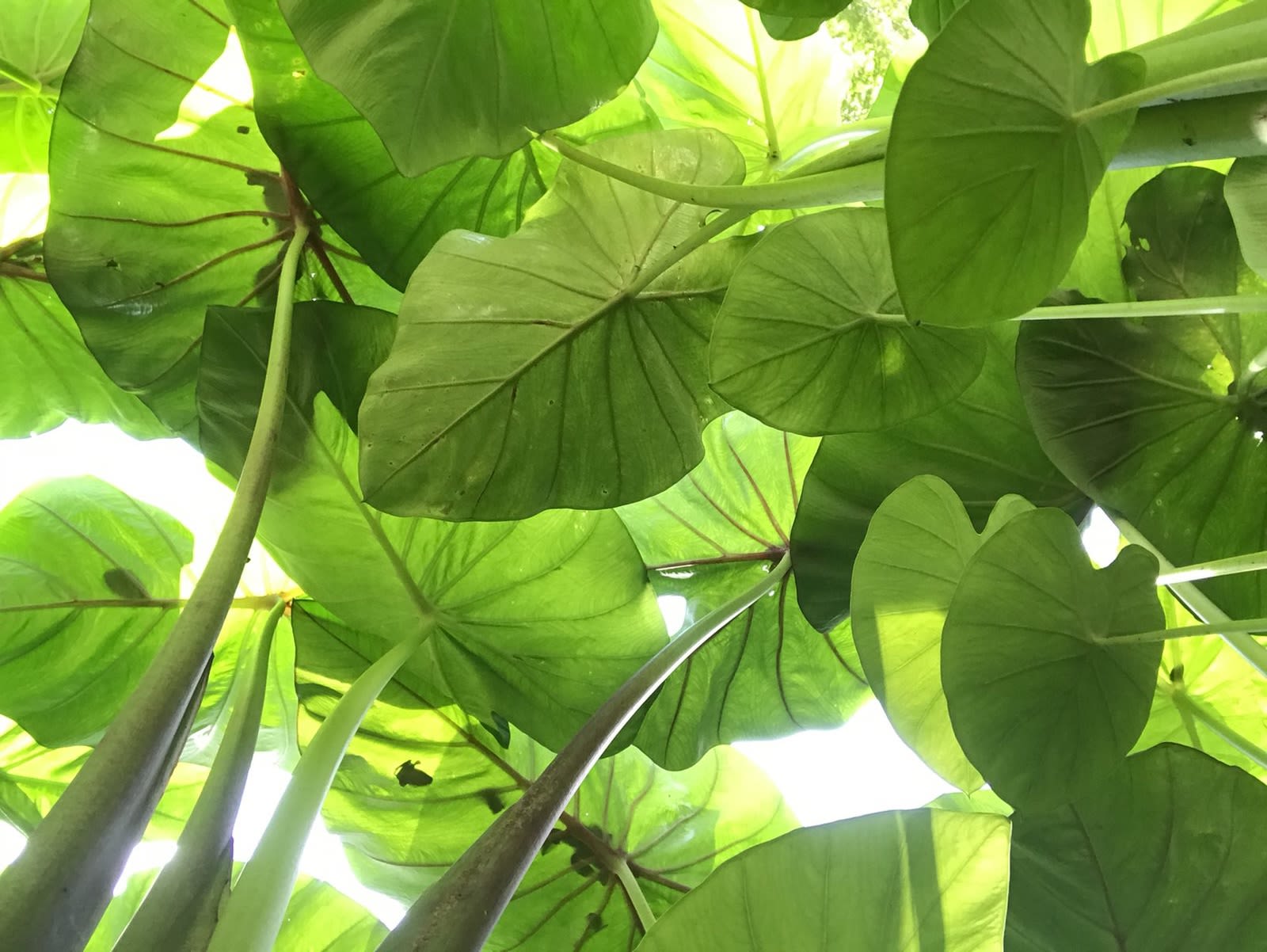Huaʻōlelo
Some Reduplications to Use & Love
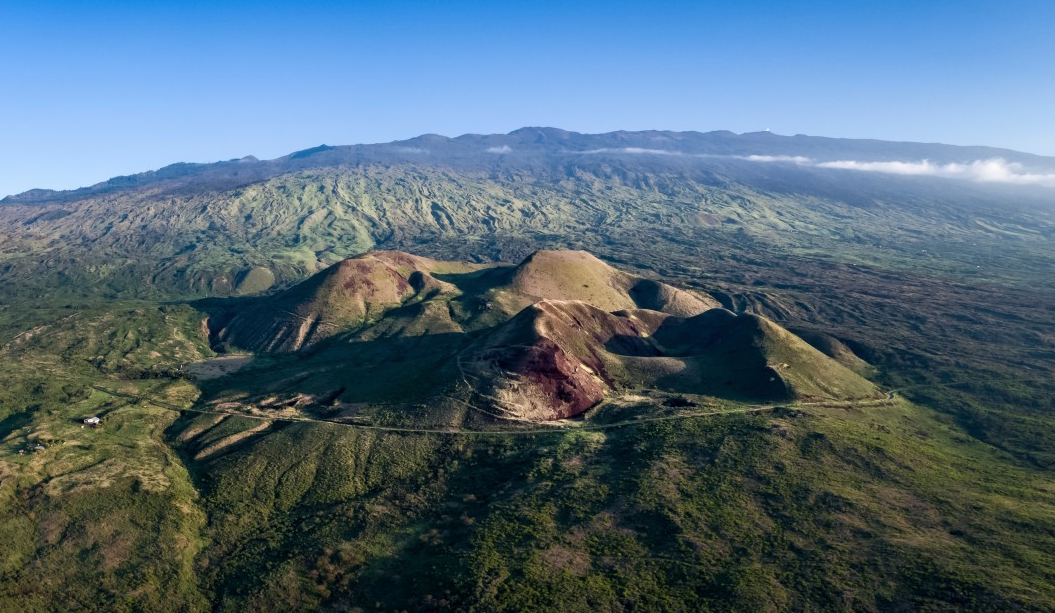
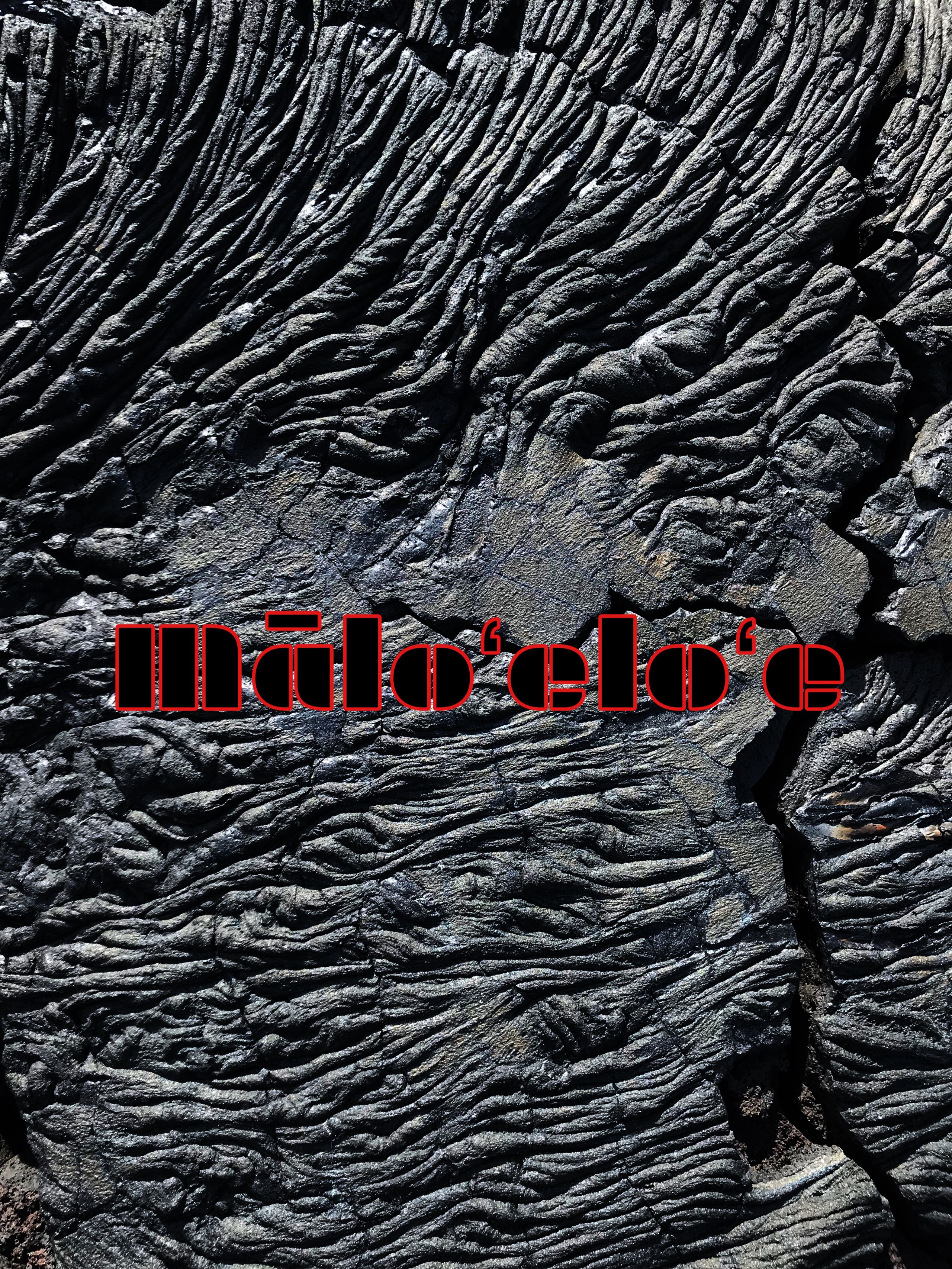
He ao kāhulihuli kēia o kākou e noho nei. He mea nui ke ʻano o ko kākou kū ʻana, hana ʻana; aia i laila ke ola me ka nele paha o nā hanauna e hiki mai ana.
This is a crazy, changing world we are living in. How we come to it and what we do in it will determine whether our descendants thrive or suffer.
E kū māloʻeloʻe mai ʻo ke kanaka makua, kū mai ʻo ke kanaka o ka ʻōiwi kila a hoʻohāliu iho nā poho lima i lalo a hana no ka pono o ke one ʻōiwi. - Nupepa Kuokoa, 5 Jan 1884
Adults, stand up strong, native people with resolve, stand up; turn your palms downward and work for the good of our homeland.
I ka wā i pilikia ai ko kākou aupuni, hoʻomaka aʻela ka puka ʻana mai o kēia huaʻōlelo ma ke ʻano kāhea a kuahaua hoʻi i ka poʻe.
When our nation entered a state of peril, this word emerged as a call to action and a way to rally people.
ʻAʻole kēia he wā no ka moe mālie loa a me ka ʻeu ʻole aʻe, akā, e ala, e ʻeu, a e kū māloʻeloʻe! - Ka Makaainana, 16 April 1894
This is not a time to lie still without action, rather it is a time to rise up, get going, and stand firm!
Ke ō mau nei nō ka ʻoiaʻiʻo o kēia mau manaʻo o nā kūpuna. E kū māloʻeloʻe nō kākou i ke aloha ʻāina me ka makeʻe ʻōlelo, i loko o ke kū me ka heheʻe paha ke one ma lalo o ko kākou wāwae.
These words of our kūpuna still ring true today. Let us be firm in our love for the land and our care for our language despite the shifting sands beneath our feet.
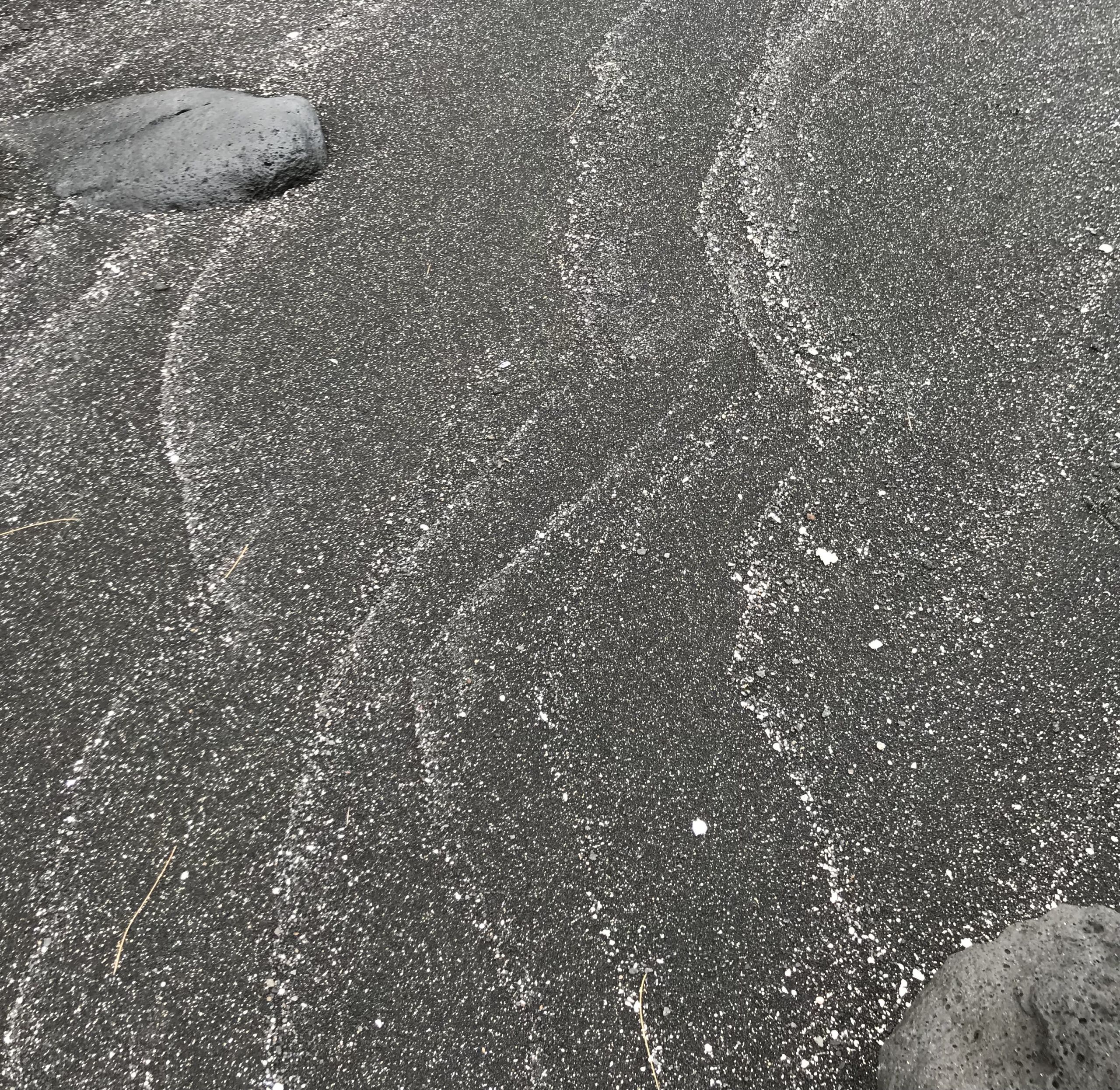
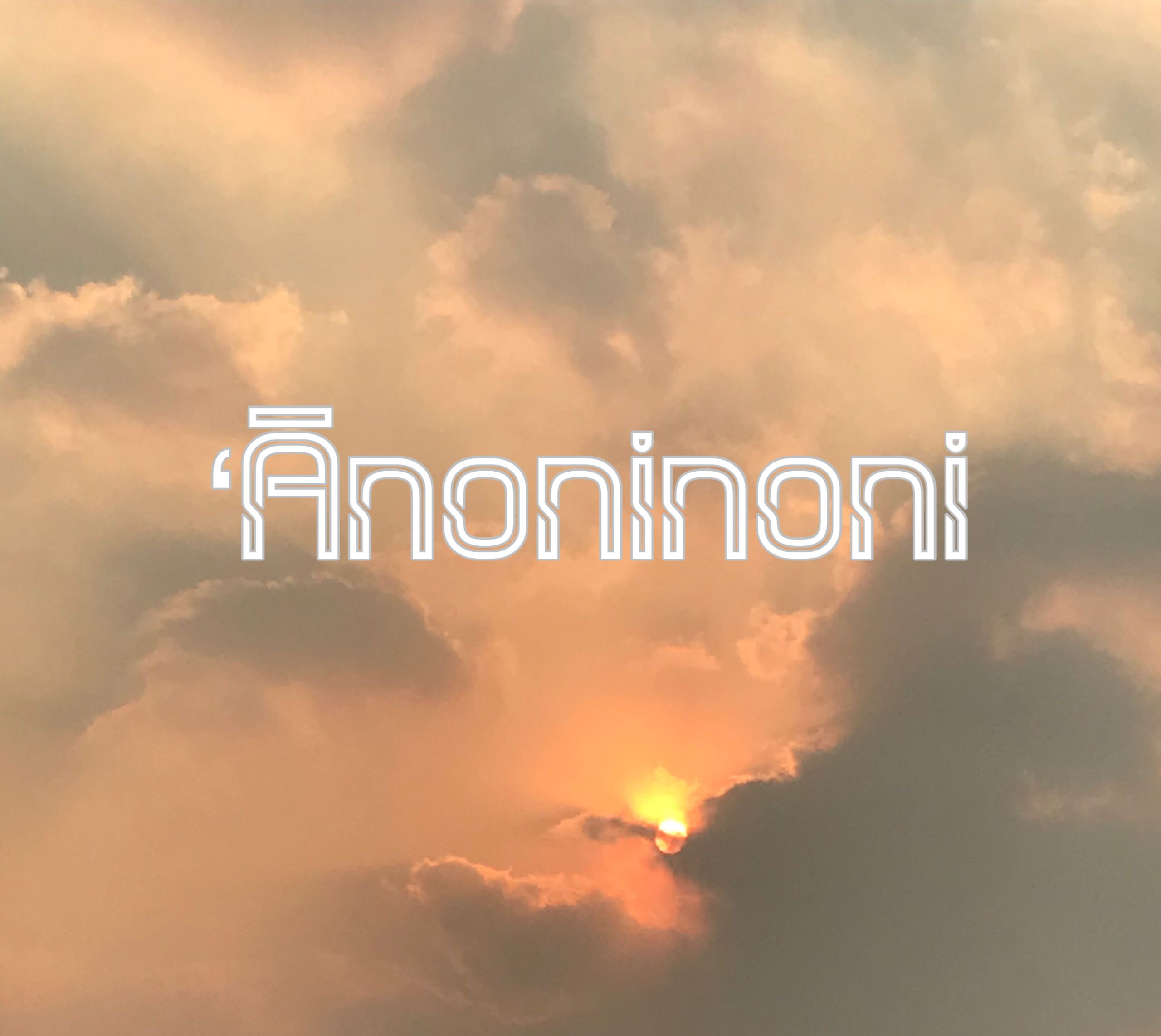
ʻO kēia ola kanaka ʻana, ʻaʻole nō he maʻalahi mau. ʻO kekahi mau hana hoʻi, he mea ia e pono ʻole ai ka naʻau a me ka noʻonoʻo. ʻO ke ʻānoninoni kekahi mea komo mai a hoʻopilikia i ka pono o loko.
Walking the kanaka path is not always easy. Some experiences can cause us to feel torn, conflicted, or anxious in our heart or mind. ʻĀnoninoni i one of those energies that can enter and upset our internal balance.
I ka haʻalele ʻana iā Honolulu, ua piha ka naʻau i nā manaʻo ʻānoninoni, kāua mai ana ka ʻāina iaʻu e noho, e hoʻopupū ana nō hoʻi, no kekahi wahi pūʻolo ʻē aʻe a ka puʻuwai e lei ai, a i hiʻipoi mau ai... - Ke Au Okoa, 25 Sept 1895.
As I was leaving Honolulu, my heart was full of conflicting thoughts, the land was urging me to stay, and I was stalling as well, because of other feelings surrounding my heart which I have always held dear...
ʻO ke kanaka hou nō hoʻi kekahi mea e ʻānoninoni ai ka naʻau, ʻoiai he kamaʻāina ʻole a no laila lelele ka houpo a paʻa ʻole.
New people can give us mixed feelings too, as unfamiliarity mixed with excitement can give us a swirling inside that we aren't sure what to do about.
Iā Hinaʻaukele mā i hiki aku ai ma Puʻunahawele, a he mea haʻohaʻo loa hoʻi ia i ko Pūleʻe manaʻo, no kona ʻike ʻana mai iā lāua nei, a ua ʻānoninoni ihola nō hoʻi kona manaʻo no ke kuko i kupu aʻe i loko ona, a he manaʻo kona e kipa kauhale aku ana lā hoʻi ʻo Hinaʻaukele mā... - Ka Hoku o ka Pakipika, 9 April 1863
Hinaʻaukele and her companion reached Puʻunahawele and Pūleʻe was surprised to see them, and he had mixed feelings about the lust that arose in him, but he hoped they would visit his home...
ʻO ka moe ʻuhane ka mea e komo mai ai ke ʻānoninoni i kekahi manawa.
Sometimes it is dreams that unsettle us.
A i ke kakahiaka ʻana aʻe, ua ʻānoninoni kuʻu manaʻo, a pono ʻole ihola koʻu noʻonoʻo no ka moe a me ka mea i ʻike ʻia... - Ka Hoku o ka Pakipika, 3 Oct 1862
The next morning, my thoughts were conflicted and my mind was disturbed at my dreams and what I had seen...
No laila, e nā hoa pūlama ʻōlelo, mai nō a ʻānoninoni ka manaʻo a me ka naʻau i ka hoʻopuka i ka ʻōlelo Hawaiʻi me ona huaʻōlelo hōʻonoʻono.
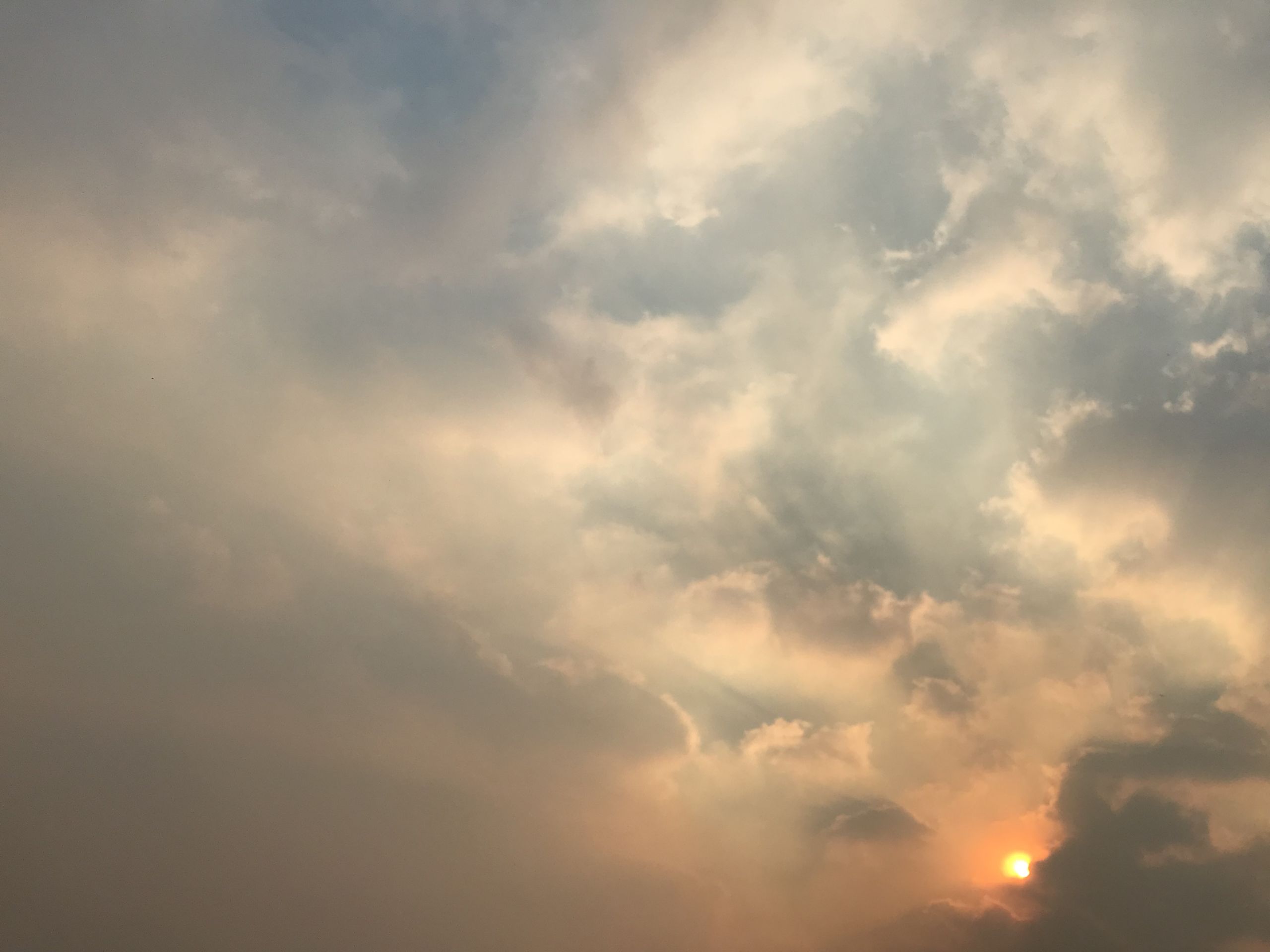
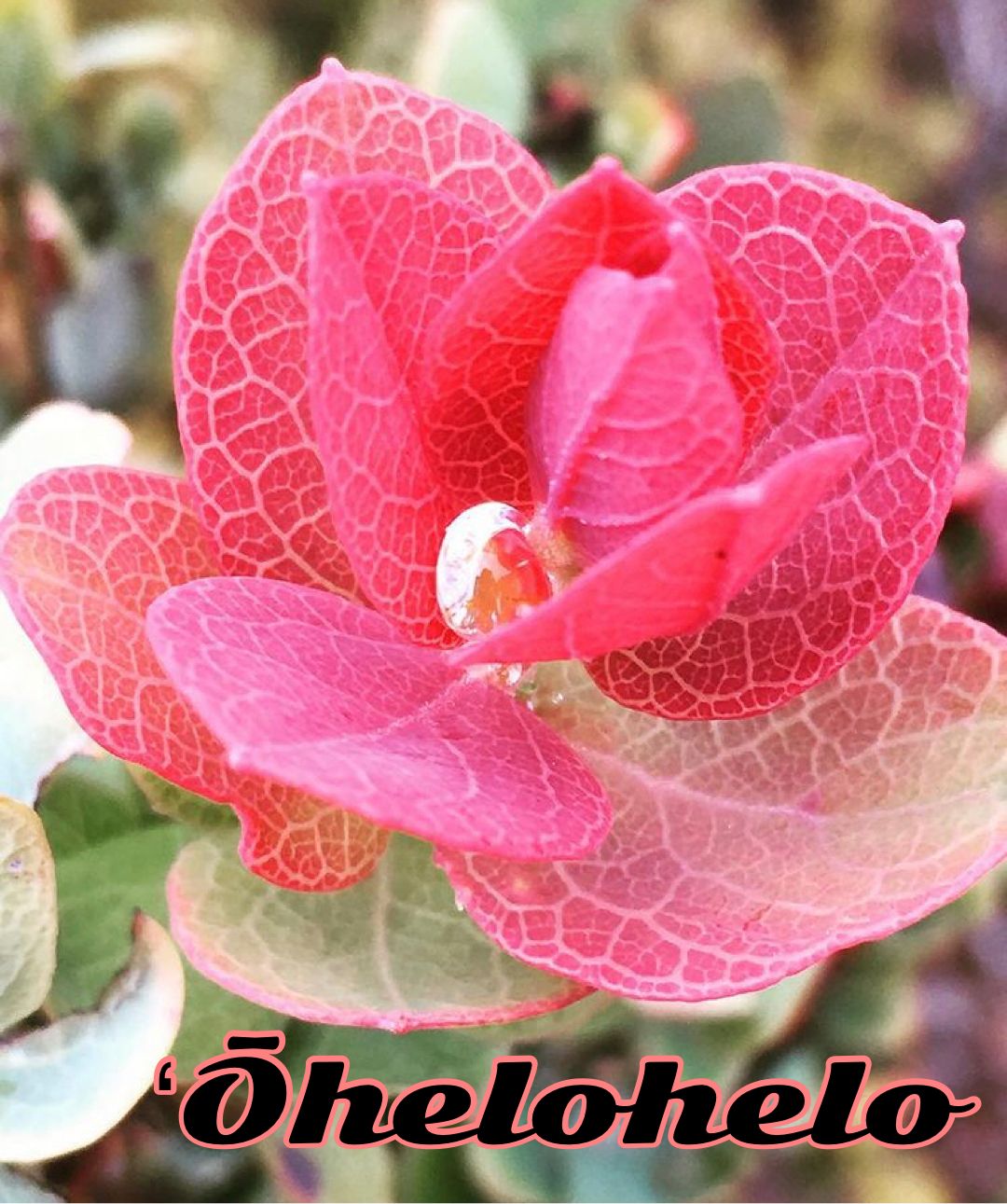
Kiʻi: Makani Gregg
Kiʻi: Makani Gregg
Inā ua hānaʻi ʻia ʻoe ma Hawaiʻi, e kau paha ka hāliʻaliʻa ke ʻoe lohe i puka ʻana mai o nā hua mele "ʻUlaʻula, melemele..." ʻO ia ka mele wai hoʻoluʻu i aʻo mau ʻia i ke kula haʻahaʻa. I ka hiki ʻana aku i ka hopena ʻo ke mele, ʻo ka hoʻōho aʻela nō ia iā "Mākuʻe!" me ka lelele o nā keiki a pau i luna, ka ua mea hoʻi ʻo ka ʻoliʻoli. Ma Kula Elementary, ʻaʻohe kumu nāna i wehewehe mai he huaʻōlelo ʻo mākuʻe no ka ʻili ʻula nani o ka Hawaiʻi, akā he mea kēlā ʻike e mehana ai ʻo loko ke hohohoʻi ka noʻonoʻo i hope lā.
If you were raised in Hawaiʻi, you will remember learning the Hawaiian colors song as a young child. The best part was always the "Mākuʻe!" at the end because all the kids jumped up and shouted it out as they threw their hands in the air. At Kula Elementary, they didn't teach us that mākuʻe was the beautiful brown of Hawaiian skin (like ʻili ʻula and ʻili kou), but it makes those shouts of joy even more special in hindsight.
Ma ua mele keiki kaulana nei, ʻo ʻākala ka huaʻōlelo no "pink". No loko mai kēlā o ka wai o ka hua ʻākala, ʻo ia hoʻi ka raspberry ʻōiwi o Hawaiʻi. A he kohu nō!
In that famous children's song, ʻākala is taught as the word for pink. This comes from the color of the ʻākala fruit, the native raspberry of Hawaiʻi know in Latin as Rubus Hawaiensis. And it is so apt!

ʻĀkala | Rubus hawaiensis
ʻĀkala | Rubus hawaiensis
ʻO kekahi hua ʻono a miʻi wale o uka e kohu ana i inoa hou aku no ka pink, ʻo ia hoʻi ka ʻōhelo. Ke pālualua mai, ʻo ʻōhelohelo nō, ka huaʻōlelo a kākou e nānā nei.
There is another delicious and pretty fruit from the uplands that is also fitting as another word for pink: the ʻōhelo. When we reduplicate it we get the term ʻōhelohelo.
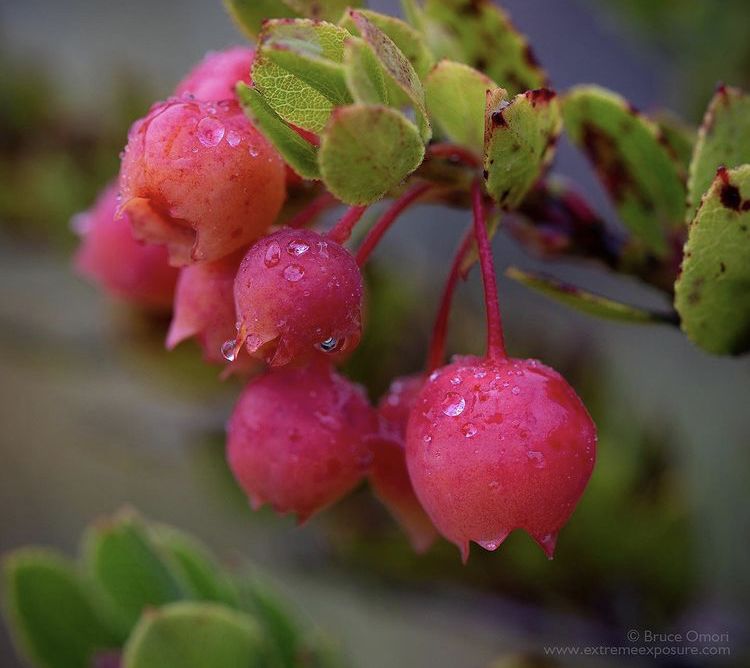
Kiʻi: @bruceomori
Kiʻi: @bruceomori
Pinepine ka hoʻohana ʻia ʻana o kēia huaʻōlelo ma nā nūpepa ʻōlelo Hawaiʻi no nā mea like ʻole, e laʻa ka pua, ka hainaka, a me ka pāpālina o ka mea hilahila. ʻO nā laʻana nani loa naʻe, aia ma nā mele. No laila, eia mai kekahi mele i loaʻa iā mākou e hoʻohiwahiwa ana i nā pua ʻōhelohelo. He mele hoʻoipoipo nō ia, a he wela nō!
This word is used often in the newspapers for all sorts of things, like flowers, ribbons, handkerchiefs, and blushing cheeks to name a few. The prettiest examples are, of course, found in mele. Here's one we found that celebrates the pua ʻōhelohelo.
Nā Pua ʻŌhelohelo
He aloha nō nā pua
Nā pua ʻōhelohelo
ʻŌhelo ʻai a ka manu
Nā Lehua ʻula i luna
Nani wale nō ka ʻikena
I ka ua nui o Hilo
Nui mai nei ke aloha
Ua like me ka wai puna
Kōhia iho i paʻa
I pau kō makemake
O luhi ʻoe lā i ka ʻimi
He ʻalu lā he ihona
Hākālia ka piʻina
I ka pali o Maulua
ʻElua aʻu makemake
Ka nanahe o kō leo
Ka nāwali o kō kino
Pōpō hoʻoleilei
E niniu ka pae ʻōpua
Pōhai mai ka nahele
Haele aʻe kāua
ʻOi malu mai nā pali
A he lā wela Makaliʻi
ʻO koʻu hoa nō ʻoe
ʻO nā lā maikaʻi
A kimo aʻe ka huhū
Kapakahi kō pāpale
Kū aʻe ka ihu i luna
Kau aʻe ʻo ka lae lā
Puʻu nei, puʻu ʻAmaʻama
U---hoʻi ʻo ka ihu ia.
*In 1896, Ka Oiaio announced that it would be making room in its columns for mele composed by aliʻi to be printed on a regular basis. The author of this mele was not given, but it appears after Victoria Kamāmalu's first composition, Ka Pua Hau o Maleka, which was preceeded by "Kalākaua's" rendition of Kahi Wai o ʻAlekoki.
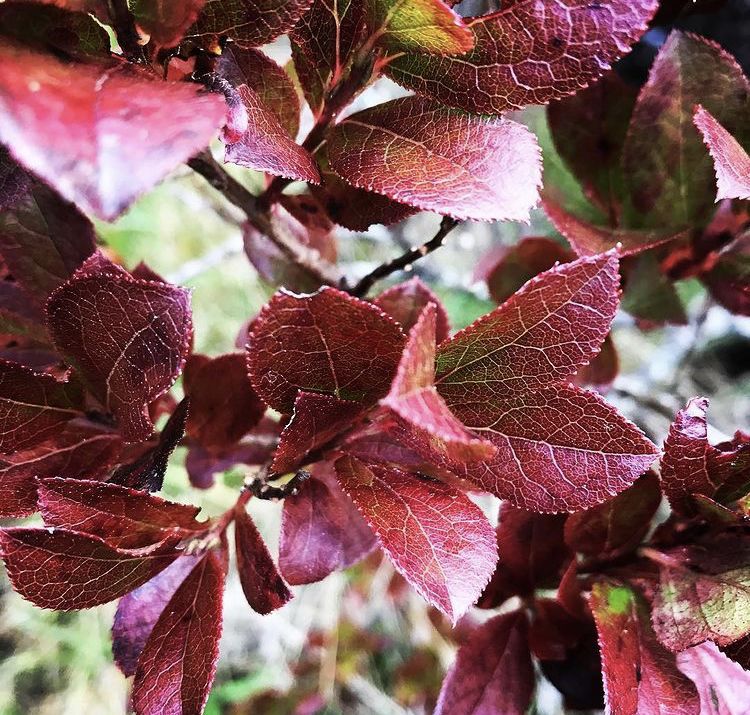

Hō ka ʻono o kēia huaʻōlelo i ka waha a me ka pepeiao. Ua maʻa paha kākou iā momona a me puʻipuʻi no ke kino nui maikaʻi o kekahi mea, akā he nani ponoʻī nō ko kahi nepunepu nei.
This word is just so good on the tounge and in the ears. Most of us are probably used to momona and puʻipuʻi as words for when something has a plump, chubby, fat, or otherwise substantial body, but nepunepu has a beauty all its own.
He hoʻohana ʻia nō nā ʻano mea like ʻole (nahele, pāpālina, manamana lima, puaʻa, a ia mea aku, ia mea aku). I kekahi manawa, komo pū mai ia mau huaʻōlelo ʻē aʻe i hōʻike ʻia aʻela i luna. E like hoʻi paha me ke kuhi o ka manaʻo, he ʻike nui ʻia nō no nā kamaliʻi.
It is used to describe all sorts of things (forests, cheeks, fingers, pigs, etc.). Sometimes it is used in combination with those other words mentioned earlier. Like you would probably guess, it is used often for small children.
Mai ke kīhāpai aʻe o ko mākou makamaka D. Kanaeʻole, ma ka Poʻakahi nei, he pōhuli nui nepunepu no kēia au hoʻoulu lāhui o Kalani. ʻO kā mākou e kalokalo aʻe nei, e hoʻolōʻihi ʻia aku kona mau lā, me ka manaʻolana he mau hoʻolaupaʻi nō mai iā ia mai no ka mākia paʻa o ko kākou Aupuni.
- Ke Alakai O Hawaii, 2 August 1888
From the fertile garden of our dear friend D. Kanaeʻole, this past Monday, comes a large and plump shoot for this era of the King, the era of increasing the Hawaiian race. Our prayer is that his days be made long with the hope for abundant issue from him as well to fulfill the unwavering motto of our nation (Hoʻoulu Lāhui).
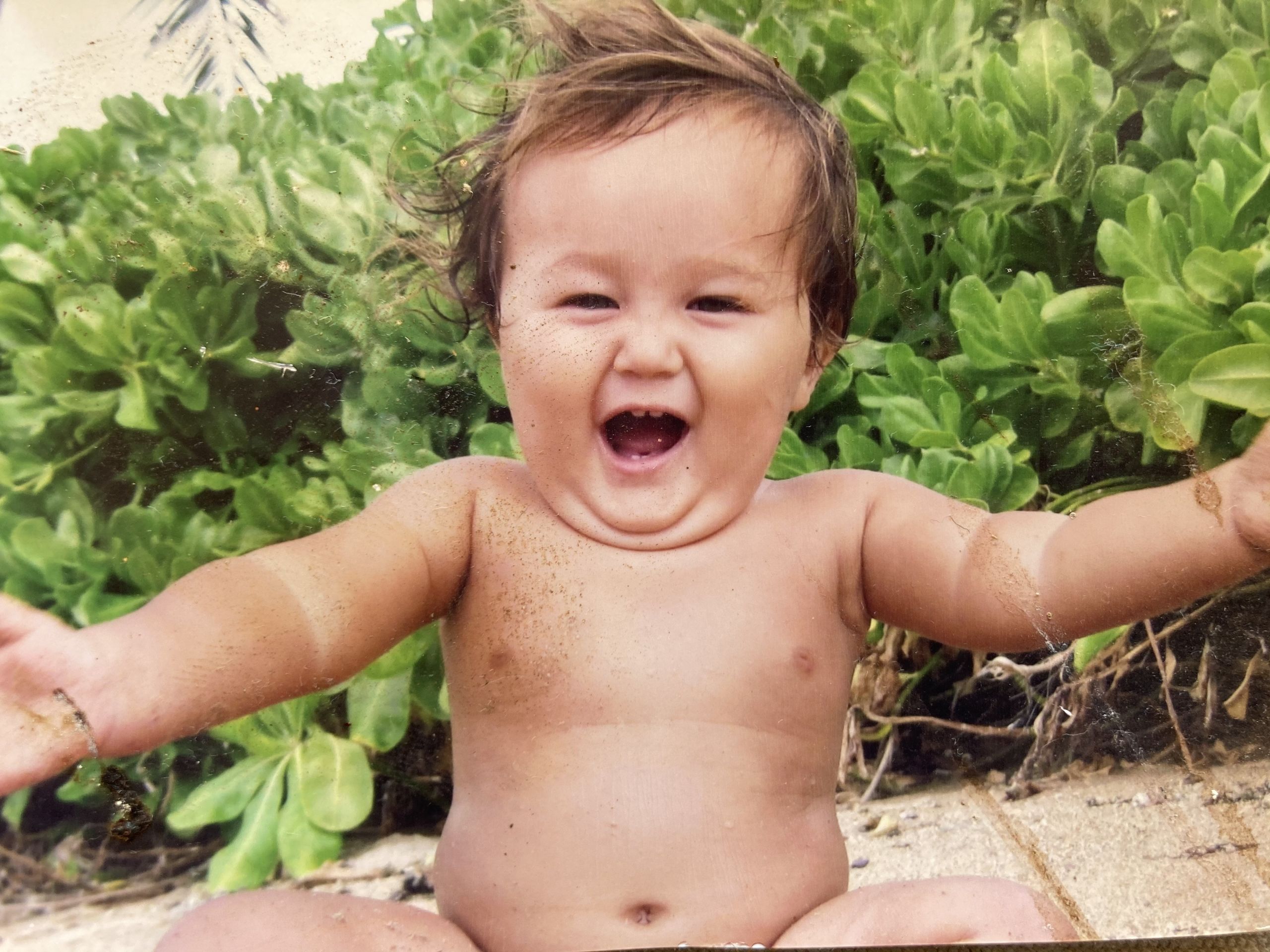
Kiʻi: Ane Bakutis. ʻO kāna hiapo kēia, ka nepunepu o nā nepunepu.
Kiʻi: Ane Bakutis. ʻO kāna hiapo kēia, ka nepunepu o nā nepunepu.
ʻOiai he lāhui puni nūpepa ka poʻe Hawaiʻi, ʻike pinepine ʻia ke kaena aku ke kanaka i ka maikaʻi o ka nūpepa. ʻAʻole paha e kāhāhā ka noʻonoʻo i ka hoʻohālikelike ʻia ʻana o kona ʻōiwi me ko ke kanaka.
Because Hawaiians were such newspaper lovers, it is seen often when people boasted of their beloved periodicals. Thus, it is not surprising to see the body of the newspaper compared to the form of a person.
He pepa nui o kona kino i ʻoi pālua aʻe ma mua o ka “Hae”, kiʻekiʻe kona kino, pālahalaha ka umauma, nepunepu a momona loa kona kino ke ʻike aku.
- Ka Nupepa Kuokoa, 1 November 1861
This is a paper with a large form, twice that of Ka Hae Hawaiʻi; it is tall-bodied and broad-chested with a substantial and bulky appearance.
Akā, ʻaʻole ma nā mea ʻano nani a ʻoluʻolu wale nō kona ʻike ʻia ʻana. ʻO ka laʻana ma lalo iho, he ʻōlelo ia na Keʻeaumoku iā Kamehameha, he mea paipai iā ia e kaua iā Kahekili.
Nepunepu isn't just limited to pretty examples, however. The ʻōlelo below is something Keʻeaumoku said to Kamehameha when encouraging him to go to war against Kahekili.
He ʻahi nui nepunepu, a ua hoʻopuni ʻia hoʻi i ka ʻupena paʻa, a ua nele kahi ona e pakele aku ai.
- Samuel Kamakau
He's a fat ʻahi fish fully surrounded by the net and he has nowhere to escape.
ʻOiai hoʻi he mau laʻana nani kēia mai loko mai o nā waha a maka peni o nā kūpuna, ʻo kaʻu laʻana punahele loa, ʻo ia hoʻi ka ʻōlelo a kekahi hoa pili oʻu, i ka pane aku i kekahi kanaka e aʻoʻao ana iā ia e makaʻala i ka ʻai o nui mai auaneʻi ke kino, a ʻo ka ia nei pane iā ia ala, me ka paʻipaʻi mālie ʻana mai i kona ʻōpū uʻi, "Ola kākou a pau i ka nepunepu!" Na wai lā e ʻole, ʻeā, e nā hoa?
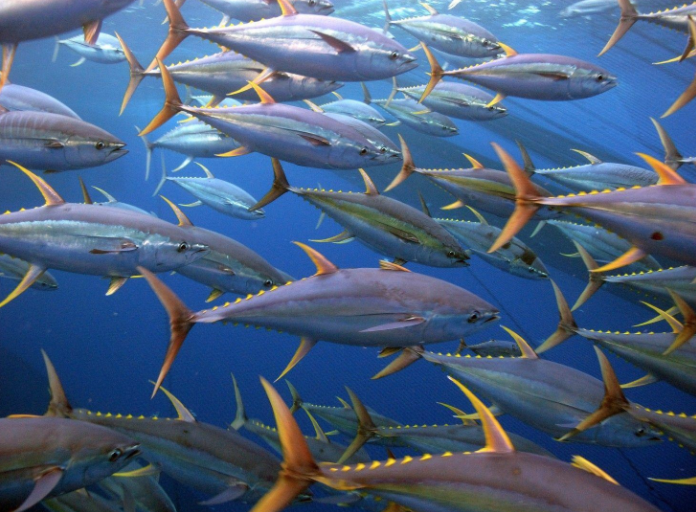

The idea of lying on the ground and watching the clouds go by in the sky seems like such a luxury these days. To be fully engrossed in an activity and not have to mind the time, could that be the ultimate definition of freedom? Lilililo i ka luakaha...auē ka nani.
Yes, not just lilo or lililo, but lilililo. I know, it's like reduplication on steroids and it's almost foreign to our ears, but our greatest writers did it. We just don't see it because it's highly uncommon now and you really have to dig back into the written record to find it. Yet it sits there, a testament to language possibilities that folks of our time have yet to fully explore.
When it comes to language, do we give ourselves the time and space to get lost in all there is? I would contend that it's a necessity rather than an luxury, because it often results in those small but crucial steps toward freedom of expression ma ka ʻōlelo Hawaiʻi (for us second language speakers anyway). Gems of assistance might lie just under that next passing cloud, but are we taking the time to watch?
In his long running column, Nā Hunahuna ʻIke o Ka Moʻolelo Hawaiʻi (Fragments of Hawaiian History), John Papa ʻĪʻī uses lilililo, mamamake, and hihihiki. Hene paha kou ʻaka, but it's all in there.
The example below comes from a story of him and his wife, Sarai, playing with Victoria Kamāmalu, who was in their care for several years as a small child, before going back to her father, Mataio Kekūanāoʻa. In this part of the story, Kamāmalu had actually fallen off the bed onto the floor, so ʻĪʻī picked her up, bounced her on his knee and made light of the little accident.
Lilililo aʻela māua me ia lā i kā Nūnūmea mau hana a pau aʻela nō hoʻi.
We became engrossed with her in the activities of Nūnūmea (play) and the fall was all but forgotten.
At first I thought maybe these triple-dipped ice cream cone words were an ʻĪʻī writing quirk (he's got a few), but the nūpepa show that Samuel Kamakau and four other writers used lilililo. Mamamake shows up over 20 times and papapau well over 200. There is only one instance of kakakali, but three of lelelele, about five of hohoholo and over 20 of hohohoʻi, papapae, and nononoho. It's hard not to wonder where these have been all my life.
Huli holo ka moku i Kahului, papapae kāua i ka ʻāina. - Ka Nupepa Kuokoa, 8 October 1864
The ship turned back, sailing to Kahului, and we landed ashore.
Io ahi na 'lii, he io honohono,
Pipio ai na 'lii, nononoho koke iho
Makee ai na 'lii i kona kapu,
Hohohoi ihola no, nononoho
O ke kane ia, o ia nei ka wahine,
O Kalahuhua la ke kane
O Keenuihelemoku ka wahine
- Samuel Kamakau in Ke Au Okoa, 4 December 1865
*When in doubt, I don't add marks or translate. Suffice to say that this passage of mele comes out of an article in the vitriolic written exchanges of Kamakau and Unauna, as they debated genealogy and knowledge of the past. He KEU a ka hoihoi ia mau moʻolelo o lāua.
I remember one conversation with my fourth year ʻōlelo Hawaiʻi teacher about how to express when a quality is really strong or when something is "so adjective". I laughed really hard when he warned, "You can't say ʻnui loa loa loa.' You have to find another way." We all learn nunui early on, but apparently nununui is also an option. It might only show up twice in the nūpepa, but I'll take my chances on that after seeing how many of these triple sound words are in there. I'm fascinated by how our kūpuna really front loaded emphasis in this way. What other haʻina ʻaʻano (descriptive words) did they do this with?
Will you join me in exploring more of these crazy options, e nā hoa? Think one up and click here to search the nūpepa. These words are great for intensifying a quality, showing a kūlana koʻikoʻi, and indicating several people doing an action or a sustained action over time. Plus, they sound wicked cool. Triple win, e nā makamaka. E leleleʻa ʻoukou! E lilililo i ka nanahe o ka ʻōlelo!

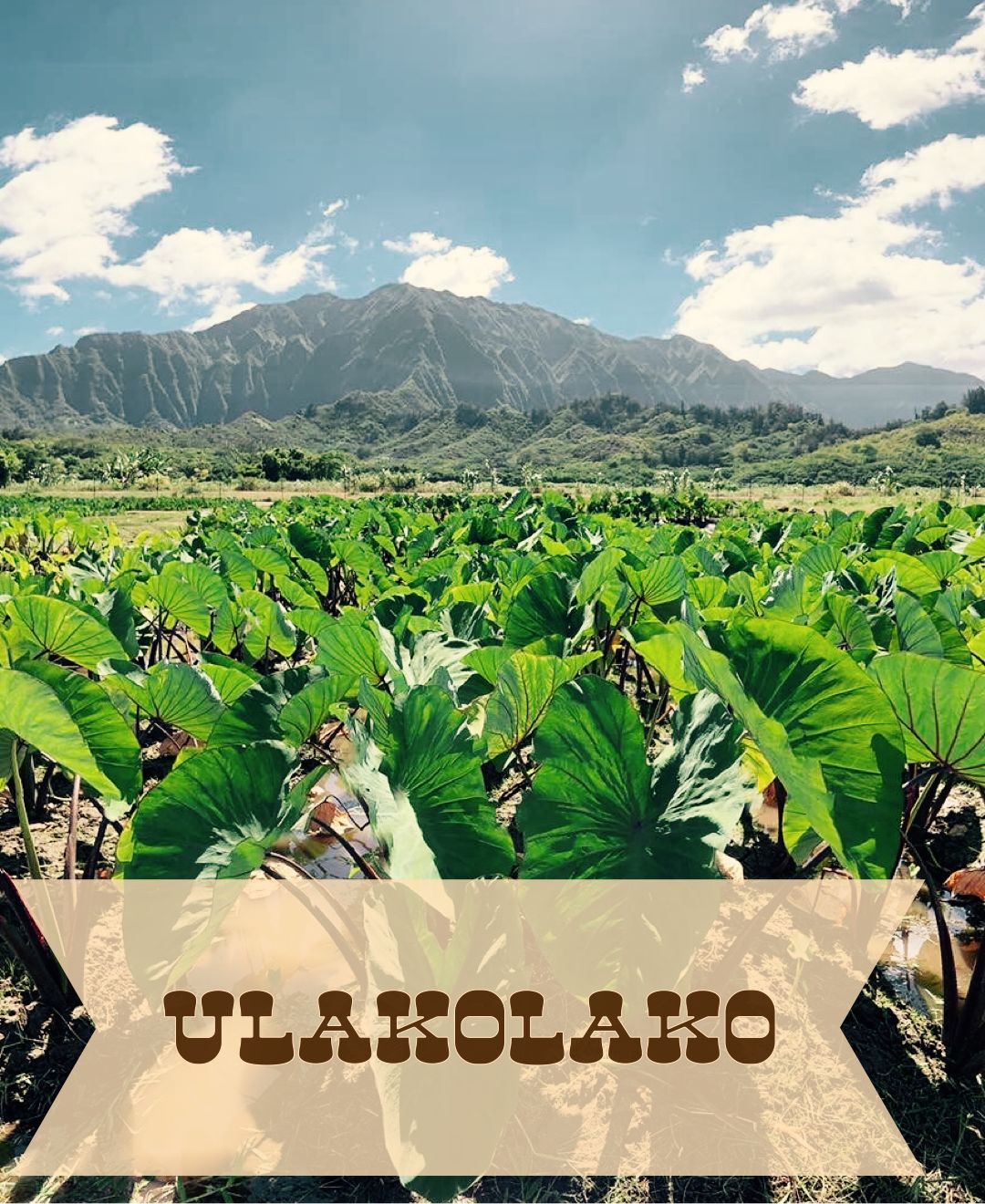
E nā hoa e kaunu pū nei me aʻu i nā huaʻōlelo o ke au i hala, he ʻōlelo panina kēia na kō mea kākau, he wahi pūʻolo aloha hoʻi e pau pono ai ka lua o ka pule o kēia mahina nani o kākou. Ua pāhola ʻia aku ka manaʻo nui o kēia pule me kēia mahina, ʻo ia hoʻi, hulia nā huaʻōlelo hou a me nā ʻano like ʻole o ka hoʻopuka ʻana i ka manaʻo i kū i ko kūpuna mā. He wahi paipai kēia mau manaʻo a moʻolelo o luna aʻe nei, aia nō naʻe iā ʻoukou ka holomua me ka ʻole ma ke ala o ke aʻo.
Noʻu iho, mau nō ka paʻakikī o ka hōʻike leʻa ʻana aku i koʻu manaʻo a me koʻu naʻau ma ka ʻōlelo Hawaiʻi, e like hoʻi me ka kaʻu e ake nei, no laila mau ka ʻimi ʻana aku i nā ala, nā kōkua like ʻole e holomua ai. ʻO koʻu manaʻolana no kēia pule, he mea kēia e ʻano ulakolako iki aʻe ai ko kākou waihona huaʻōlelo. I mea nō hoʻi kēia e ulu aʻe ai ka hoi a me ka leʻaleʻa i kēia leo aloha o kākou.
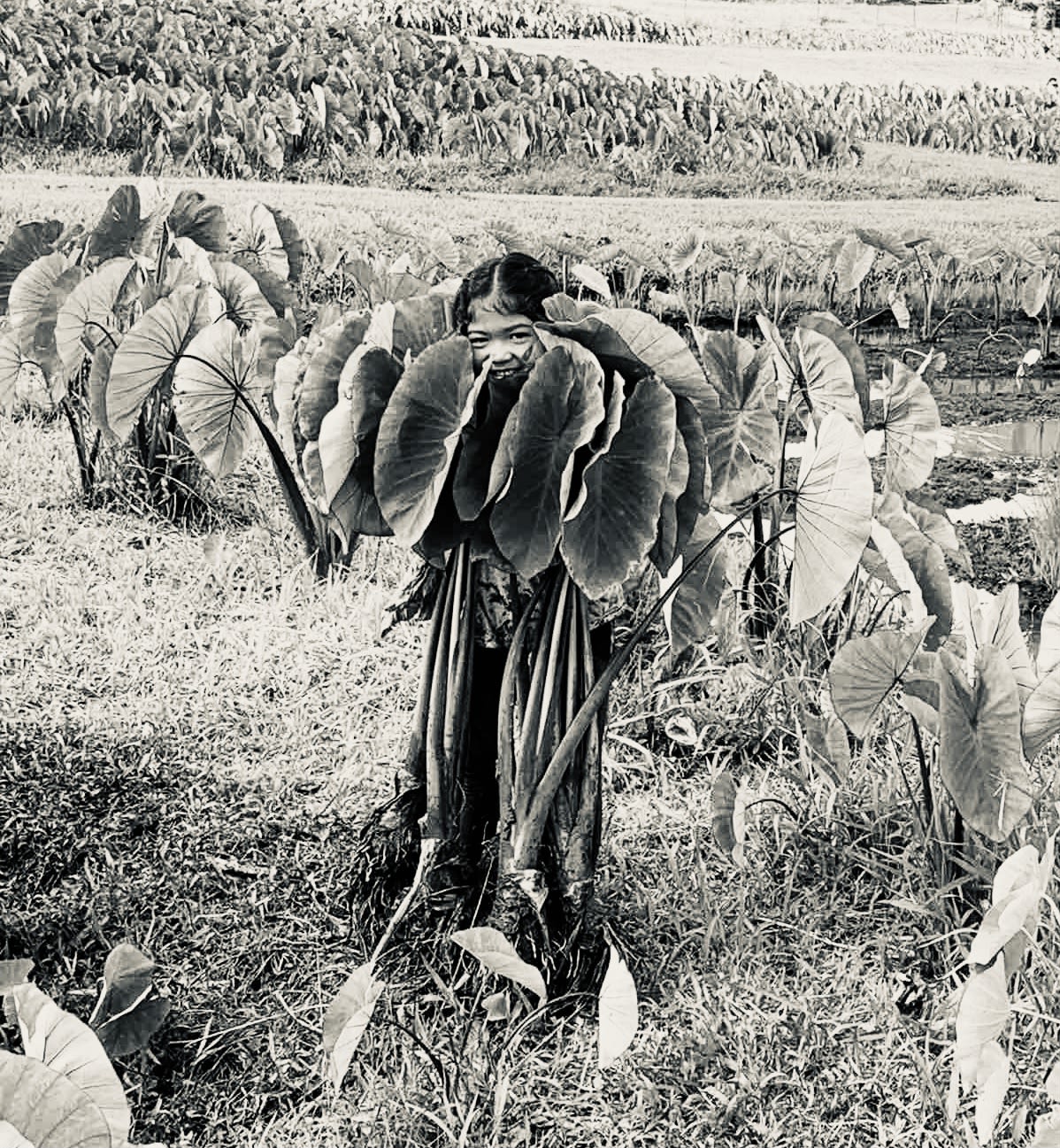
Kiʻi: Kamuela Yim
Kiʻi: Kamuela Yim
ʻOiai ua ʻehaʻeha ʻo loko i ka noho kaʻawale mai ka piko aku, ʻimi au i ka maha ma ka hui ʻana me ka poʻe ʻōlelo Māori o lalo nei. ʻO kaʻu e ʻike nei ma ka noho ʻana i waena o lākou, he "taonga" ka ʻōlelo Māori iā lākou. ʻO ia mea he taonga, he mea makamae loa i ke kanaka, he mea hoʻi e pūlama nui ai me ka mahalo piha o ka manaʻo, me ke aloha piha o ka naʻau, a me ka hoʻohemahema ʻole aku.
No loko mai paha kēia manaʻo o ka lei pounamu o lākou (hei tiki, hei pounamu) i lei ʻia i pale a i mea hoʻopili kupuna. Akā, ʻo ke aloha, ʻo ka pilina, ʻo ka ʻike e ola ai nā hana kupuna, he mau taonga nō hoʻi kēia. Me he mea lā, he hōʻailona kēlā huaʻōlelo i ka poʻe ē, e mālama loa kākou i kēia mea, i kona pono a me kona ola, a mau loa aku hoʻi. No laila i koʻu lohe ʻana he taonga ka ʻōlelo makuahine iā lākou, hū aʻela ke aloha a me ka mahalo.
E nā hoa o ke ewe hoʻokahi, e mālama kākou i ke kamaiki he ʻōlelo, e hiʻi kākou i ka poli, e lei kākou me he taonga lā, e hānai aku ma ka papa ʻāina me ka ʻohana, e lawe aku i ʻō a i ʻaneʻi he hoa hele, e hoʻonanea pū i ka mele, e heluhelu pū he hoa hoʻīnaʻinau i nā moʻolelo kupuna, e pupue pū hoʻi i ka pili aumoe. Ma ona lā e ulakolako ai ko kākou kanaka ʻana.
